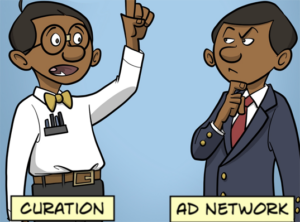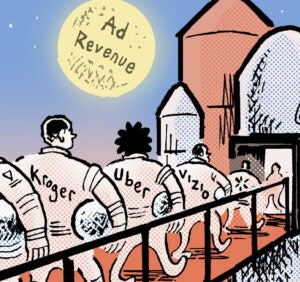Welcome to AdExchanger Talks, a podcast focused on data-driven marketing. Subscribe here.
As global CRO at Bloomberg Media, Keith Grossman oversees a “business within a business” that reaches 62 million users and brings in nine figures of revenue annually.
In the latest episode of AdExchanger Talks, Grossman describes his sales strategy for that business-focused audience, and where programmatic fits in.
“Ultimately, every dollar we have that’s digitized will be bought and sold by computer,” Grossman says. “What programmatic provides is an ease of transaction, should that be the method in which somebody wants to partner with us.”
And, he adds, “It opens us up to thinking about how we price ourselves differently not annually, or monthly or weekly or even daily, but ultimately down to the millisecond. My dream is to be in a world where we don’t have a static rate card, but rather to have a fully dynamic one.”
The Bloomberg Media audience, if not the revenue, is far larger and more diverse than the core terminal business, which reaches 327,000 mostly Wall Street investors.
Much of Media’s audience is outside the financial sector, in areas like B2B, consulting and marketing. It reaches those professionals across every platform (print, digital, television, radio and live events). And the company has been proactive on social, snatching up a myriad of Twitter handles, including @business and @brexit.
Even so, about 50% of Bloomberg’s advertisers are still in the financial sector, an industry (like so many) that is undergoing rapid marketing change.
Consider Chase’s recent decision to reduce its site list from 400,000 to only about 5,000 properties.
“I think it’s a wonderful move,” Grossman said. “We’re beginning to see in the marketplace a large number of clients and advertisers really consider the contextual relevance of what their message is aligned against.”
Also in this episode: the Bloomberg ad stack, its walled-garden approach and the rise of exclusive media deals.
















